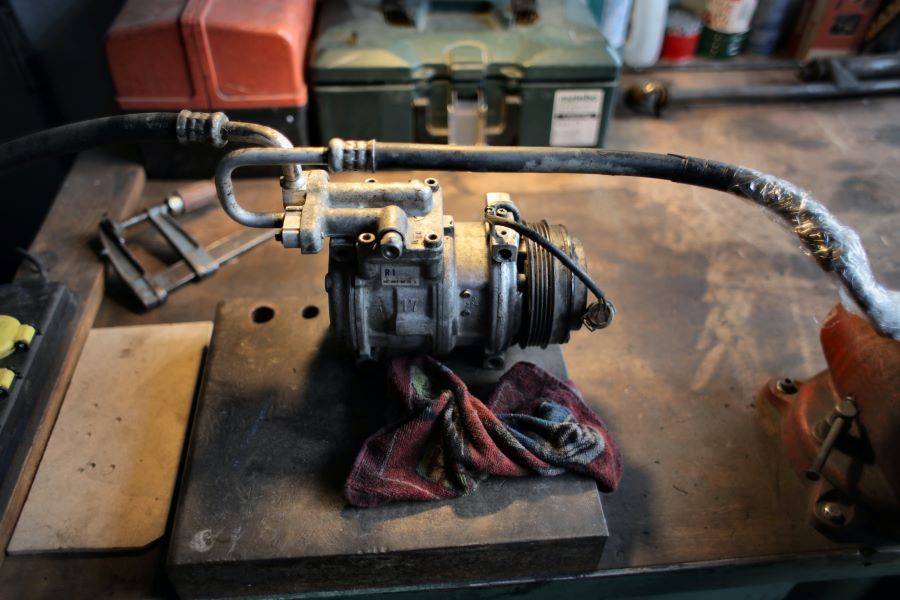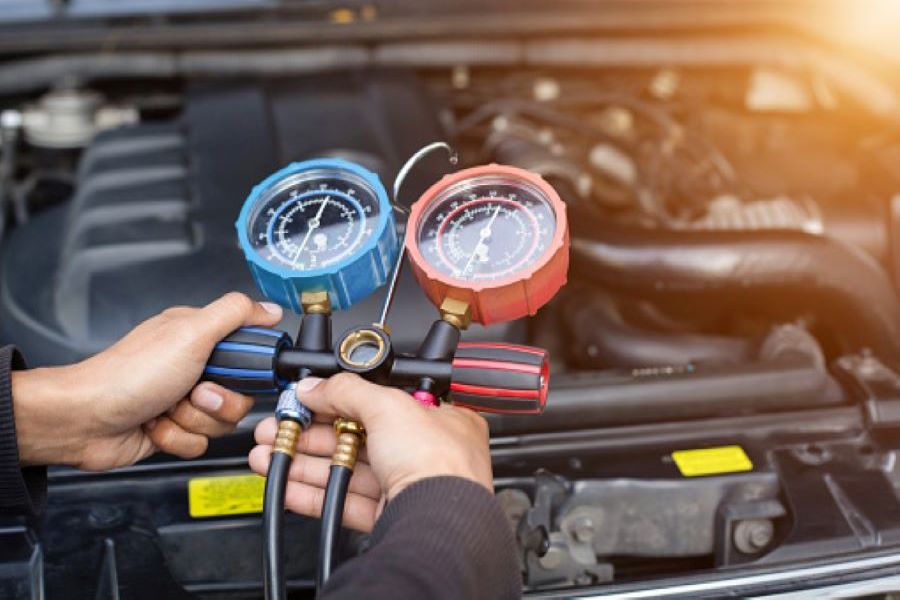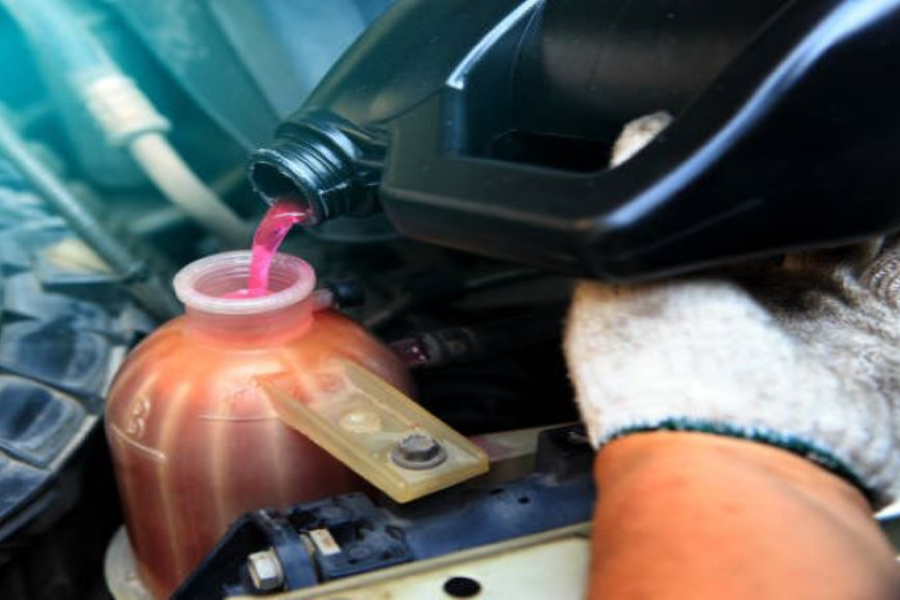A car’s air conditioning is one of the most critical systems in a vehicle. When the air conditioning is malfunctioning or not working, one has to drive with windows down for some air.
Sadly, there’s no specific warning for malfunctioning car air conditioning. Therefore, it is imperative to understand car air conditioning, know when it’s not working, and how to repair it.
This article will look at the causes of car air conditioning failure and how to repair them, read on to learn more.
Table of Contents
Car air conditioning and its functions
Common car air conditioning problems and their causes
How to repair car air conditioning
Final words
Car air conditioning and its functions
The car air conditioning system works like a fridge or air conditioning in your home. Its purpose is to get rid of hot air from inside your car.
So, how does car air conditioning work? The air conditioning in cars works by manipulating the refrigerant between liquid and gaseous states. Typically, the refrigerant absorbs heat and humidity, changes states, and gives the air conditioning system cool, dry air.
Also, the air conditioning system controls the temperature and pressure as it changes between liquid and gaseous states.

Components of the air conditioning system
Understanding the components of car air conditioning helps to diagnose any problems that it may have and know how to repair them. It comprises the following parts;
- Compressor: This component pressurizes the AC system and circulates the refrigerant. It’s usually driven by the main drive belt and is located in front of the engine.
- Condenser: it is located in front of the radiator and it helps remove heat from the refrigerant.
- Evaporator: it is found in the car’s dashboard, and the component absorbs heat from its interior.
- Metering device: it is also known as the expansion valve or metering tube. It changes the pressure in the car’s air conditioning system from high to low. It is either near the firewall under the hood or the dash.
- Lines or hoses: these are metal or rubber tubes carrying the refrigerant.
- Refrigerant: it’s a fluid chemical that travels through the air conditioner’s system to convert low-pressure gas to a high-pressure liquid. Also, the refrigerant absorbs heat as it travels through the system and provides cool air.
Which warning light shows when there is an Air Conditioning problem?
Normally, no warning lights to indicate issues with a car’s air conditioning. However, some cars have Driver Information Centers that show the status of many systems in the vehicle.
Diagnosis of a car air conditioning problem
When diagnosing problems with air conditioning, the car should be on a leveled ground with wheel chocks under the rear tire on the driver’s side before opening the hood.
Then, look for the air conditioning compressor in front of the engine, where the engine drive belt drives it. One may need a flashlight to locate it. But if that doesn’t work,turn the engine on and the air conditioning off. As a result, the compressor clutch will be immobile, while the pulley will spin with the belt.
Turn on the A/C to see if the clutch is engaged; if so, go inside the vehicle and turn the fan to medium speed. Then, check to see if the air from the vents is cold.
These are some of the things you may notice are:
- No air from the vents.
- The compressor clutch doesn’t engage.
- The system is low or empty on refrigerant.
- The clutch is engaged, but no cold air.

Importance of a Properly Functioning Car Air Conditioning
Some benefits of having a well-functioning A/C system include the following;
- Optimal performance of the vehicle
- Good air quality
- It reduces the cost of repairs.
- It promotes better fuel consumption.
Common car air conditioning problems and their causes
There are many car air conditioning problems with different causes. Some of the problems include the following;
The A/C is not blowing cold air
When the car engine is at operating temperature, turn the Air conditioning to “Max cooling.” If the air from the vents is not cool, you need to repair the car’s air conditioning. Some of the causes of the air conditioning not blowing cold are;
- Low levels of refrigerant
- Refrigerant leak
- Faulty compressor
- Malfunctioning control circuit
- Faulty control or air duct system
Also, if there is little or no change when you move the control from hot to cold temperature, the blend door or air distribution case could be the problem.
Universal Compressor air conditioning is appropriate if you need to change your compressor. After all, it is universal, has a one-year warranty, and uses R-134A refrigerant. In addition, it has a seven-day lead time for one to ten pieces and can be customized with a company logo.
No air from the vents
When the air conditioning system is not blowing air through the vents, there is a problem with the climate control system. Some of the causes are:
- A faulty blower motor
- An electric system failure
- A defective electrical component control or module
Air has a bad smell
When the car’s air conditioning emits a foul smell, it means there’s mold or mildew in the system. The mold occurs when water sits in the evaporator case with a blocked drain. Also, it could be an old air filter that needs changing.
A/C makes noise when turned on
When one hears noises from turning on the A/C, it could mean that some air conditioning components are faulty. Other causes of noise when the A/C is turned on include:
- Seized compressor
- Problem with the compressor pressure
- Loose compressor mounts
- A leaking shaft seal
- Loose parts in the system
- Loose fans
- A sliding belt
- A faulty blower bearing
- Too much refrigerant in the system
Types of air conditioning
The two major car air conditioning types are the expansion valve and the orifice tube system. The main difference between these two systems is the device they use to lower the refrigerant pressure.
The expansion valve system uses a four-stage process to cool the vehicle. And the orifice system uses a fixed orifice tube to control the entry of high-pressure liquid refrigerant into the evaporator instead of an expansion valve.
How to repair car air conditioning
Car air conditioning repair can be hard for an individual, especially if they do not know the exact issue.
So, can one repair a car’s air conditioning themselves? There are some minor car air conditioning repairs a beginner can fix themselves. However, it is recommended to repair a car’s air conditioning with basic car repair knowledge, as you may end up causing more harm than good.
Here are a few things needed for car air conditioning repairs:
- Refrigerant
- Safety glasses
- Air conditioning manifold gauge set
- Gloves
When repairing a car’s air conditioning, ensure safety first. It’s crucial to be aware that the system is filled with high-pressure refrigerant, and it can increase to over 150°F (65.556°C). Further, one must watch out for moving parts if the engine is on and ensure clothes are tightly secured to avoid accidents.
Also, it’s crucial to put only the recommended refrigerant in the system and never install gauges when the A/C is running.
But, it’s advisable to take your vehicle to a trained technician for air conditioning repairs.

Final words
The car’s air conditioning system is important to keep the vehicle cool. Hence, it’s essential to understand the components of the A/C system to know when there’s an issue.
Also, it’s crucial to be attentive to anomalies, as car air conditioning systems lack warning lights to show when it is malfunctioning. And it’s advisable to repair a car’s air conditioning if you have car repair knowledge. That said, it’s best to get spare parts from trusted suppliers and stay updated with the latest trends in the automotive industry.




